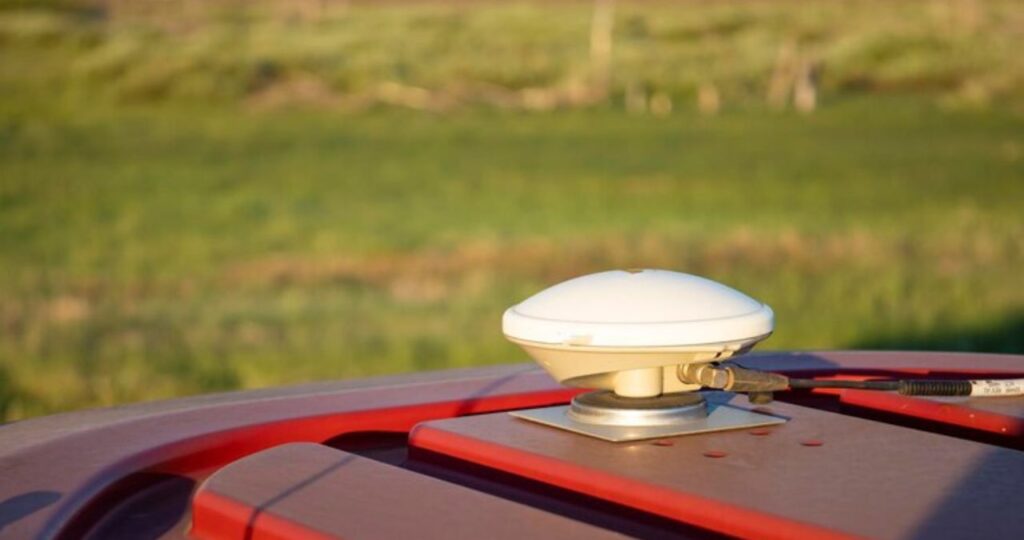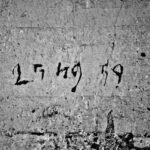Weather is one of the few things in life we can’t control—but we can certainly prepare for it. From flash floods to snowstorms, heatwaves to hurricanes, weather forecasting tools have become essential for daily living. For residents in North Texas and beyond, WFAA Radar has emerged as a trusted, intelligent, and intuitive resource for real-time weather monitoring.
This comprehensive tool isn’t just another weather app—it’s a fully featured, data-rich radar system powered by both cutting-edge technology and the experienced meteorologists at WFAA, a leading ABC affiliate in Dallas, Texas. With its hyper-local tracking, mobile alerts, and forecast accuracy, WFAA Radar empowers individuals, families, businesses, and governments to stay ahead of whatever Mother Nature throws their way.
What Is WFAA Radar?
WFAA Radar is an interactive, high-resolution weather tracking system designed to provide minute-by-minute forecasts, storm path predictions, and severe weather alerts. Embedded in the WFAA mobile app and website, it offers real-time radar data and customizable notifications, ensuring that users are never caught off guard by the weather.
Built with community safety in mind, the radar system helps visualize weather threats with layered maps, animated imagery, and clear warnings that are both timely and easy to understand.
The Technology Behind WFAA Radar
At the heart of WFAA Radar is a Doppler radar network, capable of detecting precipitation, wind velocity, and storm intensity with stunning precision. The system also incorporates:
-
Satellite imaging for large-scale tracking
-
AI-powered prediction models for forecast accuracy
-
Crowdsourced weather data to refine hyper-local alerts
-
GIS-based mapping for visual clarity
The blend of satellite and radar imagery with predictive technology offers a complete picture of what’s happening—and what’s coming next.
How WFAA Radar Differs from Other Weather Apps
While national apps like The Weather Channel and AccuWeather offer general forecasts, WFAA Radar provides local-first insights tailored to the North Texas region. Some standout features include:
-
Real-time storm path projections
-
Customized alerts for specific ZIP codes
-
Integration with WFAA’s Emmy-winning meteorology team
-
Live streaming of on-air weather reports during major events
Simply put, it’s more relevant, immediate, and community-focused.
Real-Time Storm Tracking and Alerts
WFAA Radar’s excels in delivering live storm tracking that shows:
-
Storm movement direction and speed
-
Expected arrival times in neighborhoods
-
Areas under severe thunderstorm or tornado watches
-
Precipitation rates and hail size predictions
This allows users to take action with clarity—whether that means seeking shelter or rerouting a commute.
Severe Weather Notifications
When the sky turns threatening, WFAA Radar’s has your back with instant alerts for:
-
Tornado warnings and watches
-
Flash floods and heavy rain
-
Severe thunderstorm activity
-
Lightning strikes within proximity
-
High wind and hail notifications
These push notifications are location-specific and delivered the moment conditions change.
WFAA Radar and Community Safety
In school districts, workplaces, and public event venues, weather-related decisions impact lives. WFAA Radar’s has become a trusted tool for:
-
School administrators deciding on early dismissals
-
Event planners avoiding cancellations
-
City officials initiating emergency protocols
-
Families determining travel safety
It’s a community safety net, not just a weather tracker.
Weather Layer Options and Customization
With WFAA Radar’s , users can view:
-
Rainfall and precipitation intensity
-
Wind patterns and jet stream movement
-
Temperature overlays
-
Storm tracks and lightning bolts
-
Past and future radar loops
Each layer is toggleable, so you see exactly what matters to you.
Mobile App and On-the-Go Features
WFAA’s mobile radar is optimized for iOS and Android, bringing powerful forecasting to your pocket. Features include:
-
GPS-linked alerts
-
Swipeable hourly and 10-day forecasts
-
Lightning alerts with precise distance indicators
-
Interactive storm tracking animations
-
Live broadcast integration
Perfect for commuters, parents, and travelers who can’t be tethered to a TV.
How WFAA Radar Supports Outdoor Planning
Planning a weekend barbecue? A school field trip? A hiking expedition?
Use WFAA Radar to:
-
Spot clear weather windows
-
Track potential thunderstorms
-
Plan routes away from impacted areas
-
Receive pollen and air quality updates
Outdoor events go smoother when you’re a step ahead of the sky.
The Role of Meteorologists at WFAA
WFAA’s weather team, led by veterans like Pete Delkus and Greg Fields, does more than read data—they interpret it, contextualize it, and communicate it with urgency and clarity. By combining human expertise with advanced tech, they bring credibility to every radar dot and squall line.
These professionals offer:
-
Expert analysis during breaking weather
-
Social media Q&As
-
On-air tutorials on radar reading
-
Round-the-clock coverage during storms
Advanced Forecasting with WFAA Radar
The radar platform features hour-by-hour forecasting, not just vague daily summaries. This includes:
-
Hyperlocal rainfall forecasts
-
Wind speed projections
-
Temperature swings across counties
-
Dew point and humidity tracking
You’ll know if it’s going to rain at 2 PM or 2:30—and that makes a big difference.
Weather Tracking for Farmers and Ranchers
In rural areas, accurate forecasts can mean the difference between profit and loss. WFAA Radar’s supports agriculture with:
-
Soil moisture predictions
-
Drought monitoring
-
Heat stress advisories for livestock
-
Frost and freeze alerts
Reliable data helps protect both crops and creatures.
Integration with Smart Devices and Home Assistants
WFAA Radar plays well with technology. Integrate it with:
-
Amazon Alexa and Google Home
-
Smart TVs and Apple CarPlay
-
Home security systems that respond to storm alerts
Just say, “Alexa, ask WFAA about the radar,” and you’ll get instant info.
Understanding Color Codes and Symbols on the Radar
The radar interface uses color-coded layers:
-
Green: Light rain
-
Yellow/Orange: Moderate rain
-
Red: Heavy rain or hail
-
Purple: Tornado potential
-
Blue: Snow or ice
Icons include:
-
Lightning bolts
-
Storm arrows
-
Warning triangles
It’s easy to read at a glance, even under pressure.
Using WFAA Radar to Track Hurricanes and Storm Systems
When tropical weather heads toward the Gulf, WFAA Radar’s becomes a critical resource. You can:
-
Track storm paths
-
Monitor wind speed and pressure
-
Watch satellite animation loops
-
View storm surge predictions
This is crucial for evacuation planning and preparation.
Personalizing Alerts and Notifications
Users can customize alert settings based on:
-
Home and work addresses
-
Weather types (severe, moderate, mild)
-
Times of day for alerts
-
Notification sound and frequency
You get relevant alerts, not notification fatigue.
WFAA Radar During Winter Weather
When Texas sees snow, sleet, or freezing rain, WFAA Radar’s kicks into high gear:
-
Shows transition lines between rain and snow
-
Predicts ice accumulation on roads
-
Sends school closure updates
-
Warns of frostbite conditions and black ice
It’s a lifesaver during southern snowstorms.
Benefits of High-Resolution Imagery
With advanced radar resolution, WFAA can:
-
Detect rotation inside storms
-
Identify hail core sizes
-
Show minute-by-minute radar loops
-
Pinpoint danger within 100 yards
Better imagery means smarter, faster decisions.
Weather Cameras and Live Footage Integration
Want eyes on the storm? WFAA Radar’s includes:
-
Traffic cam feeds from major highways
-
Live weather cams across the region
-
Integration with news broadcasts
-
Streamable footage via app or website
It adds visual confirmation to the data.
Educational Uses of WFAA Radar
Teachers and students can use the radar to:
-
Track storm patterns in science class
-
Learn about meteorology
-
Practice reading radar data
-
Conduct weather-based research projects
It’s a tool for learning and safety alike.
Social Media Integration and Community Sharing
Snap a pic of a supercell? Share it through WFAA Radar’s social integration:
-
Auto-tweet storm pics with tags
-
Submit weather footage to WFAA team
-
Engage with local storm spotters
-
Join live radar discussions on Facebook and X
It builds a community of awareness.
How WFAA Radar Helps Local Governments
City managers and first responders rely on:
-
Advance warnings for evacuations
-
Flood zone alerts
-
Utility outage projections
-
Live radar overlays on emergency systems
Preparedness starts with precise forecasting.
Comparing WFAA Radar with National Services (NOAA, AccuWeather)
| Feature | WFAA Radar | NOAA | AccuWeather |
|---|---|---|---|
| Local Focus | ✅ | ❌ | ❌ |
| TV Integration | ✅ | ❌ | ❌ |
| Real-Time Radar | ✅ | ✅ | ✅ |
| Mobile Custom Alerts | ✅ | ✅ | ✅ |
| Trusted Meteorologists | ✅ | ❌ | ❌ |
The takeaway? WFAA Radar wins on relevance and real-time value.
User Testimonials and Real-Life Stories
“We evacuated early thanks to a tornado alert from WFAA Radar.” – Lori H., Denton
“I avoided getting stuck in ice traffic. This app is a lifesaver.” – Brian K., Fort Worth
“It’s the first thing I check in the morning.” – Sarah J., Plano
Tips to Maximize WFAA Radar Features
-
Set multiple location alerts (home, school, work)
-
Use radar loop mode during storms
-
Turn on lightning proximity alerts
-
Integrate it with your smart home
-
Watch live coverage during severe weather events
Future of WFAA Radar Technology
Coming soon:
-
3D radar models for immersive forecasting
-
AI-based storm behavior predictions
-
Voice-activated briefings
-
Crowdsourced storm verification
The forecast? Smarter, faster, and more interactive.
Conclusion
In a world where the weather can turn dangerous in moments, WFAA Radar isn’t just an app—it’s a lifeline. Whether you’re planning your commute or preparing for a Category 4 hurricane, this tool offers the clarity, speed, and reliability needed to make informed, life-saving decisions.






